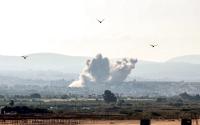4 June 2007Alister Doyle
Global warming that is melting ice and snow will affect hundreds of millions of people around the globe by disrupting rivers in Asia, thawing Arctic ice and raising ocean levels, a U.N. report said on Monday.
Glaciers from the Himalayas to the Alps are in retreat, permafrost from Alaska to Siberia is warming and snowfalls are becoming unreliable in many regions, according to a "Global Outlook for Ice and Snow" written by more than 70 experts.
And it said the changes, widely blamed on greenhouse gases released by mankind's use of fossil fuels, would be felt far from polar regions or high mountain areas.
"Fate of the world's snowy and icy places as a result of climate change should be cause for concern in every ministry, boardroom and living room across the world," said Achim Steiner, head of U.N. Environment Programme of the 238-page report.
He said the findings were relevant "from Berlin to Brasilia, and Beijing to Boston".
The report said that about 40 percent of the world's 6.5 billion population would be affected by retreating glaciers in Asia -- snow and ice in the Himalayas, for instance, help regulate river flows and irrigation from China to India.
And a one meter (3 ft 3 in) rise in world sea levels, linked to expansion of the oceans as they warm and melt from glaciers, could cause almost $950 billion in damage and expose 145 million people to flooding, it said.
Oceans rose by almost 20 cms last century and U.N. studies project a further rise of 18-59 cms by 2100. Asia would be hard hit by rising seas, especially low-lying Bangladesh, it said.
ENVIRONMENT DAY
The snow and ice report was released on the eve of World Environment Day, and two days before a June 6-8 summit by the leaders of the world's top eight industrial powers in Germany.
"The world cannot afford simply to discuss climate change. It has to act," Steiner said.
The report said there were big uncertainties about the fate of ice on Greenland and Antarctica, the world's main stores of fresh water. Greenland contains enough ice to raise sea levels by 7 meters, bigger Antarctica by about 60 meters.
And less snow is falling in many areas, with a 1.3 percent decline per decade since the 1960s in the northern hemisphere.
A one degree Celsius (1.8 Fahrenheit) temperature rise would raise the snow line in the Alps by 150 meters, for instance, damaging ski resorts and tourism.
And lifestyles were already changing. Hunters in Qeqertarsuaq in western Greenland were turning to use motorboats rather than dogsleds because the sea ice was no longer solid. Polar bears are among animals under threat from shrinking ice.
The report said the rise in temperatures "has not yet resulted in widespread permafrost thawing." Even so, the report said the quantity of methane being released from permafrost in Siberia may already be five times more than previously supposed. Methane is a powerful greenhouse gas stored in vast quantities in permafrost.
Among benefits from melting ice, a northern sea route along the coast of Russia could be open for 120 days a year by 2100 against 30 now.
And the report pointed to dangers of abrupt floods linked to a melting of glaciers that have blocked lakes. In 1998 a so-called glacier lake outburst flood killed more than 100 people in Kyrgyzstan and Uzbekistan.






